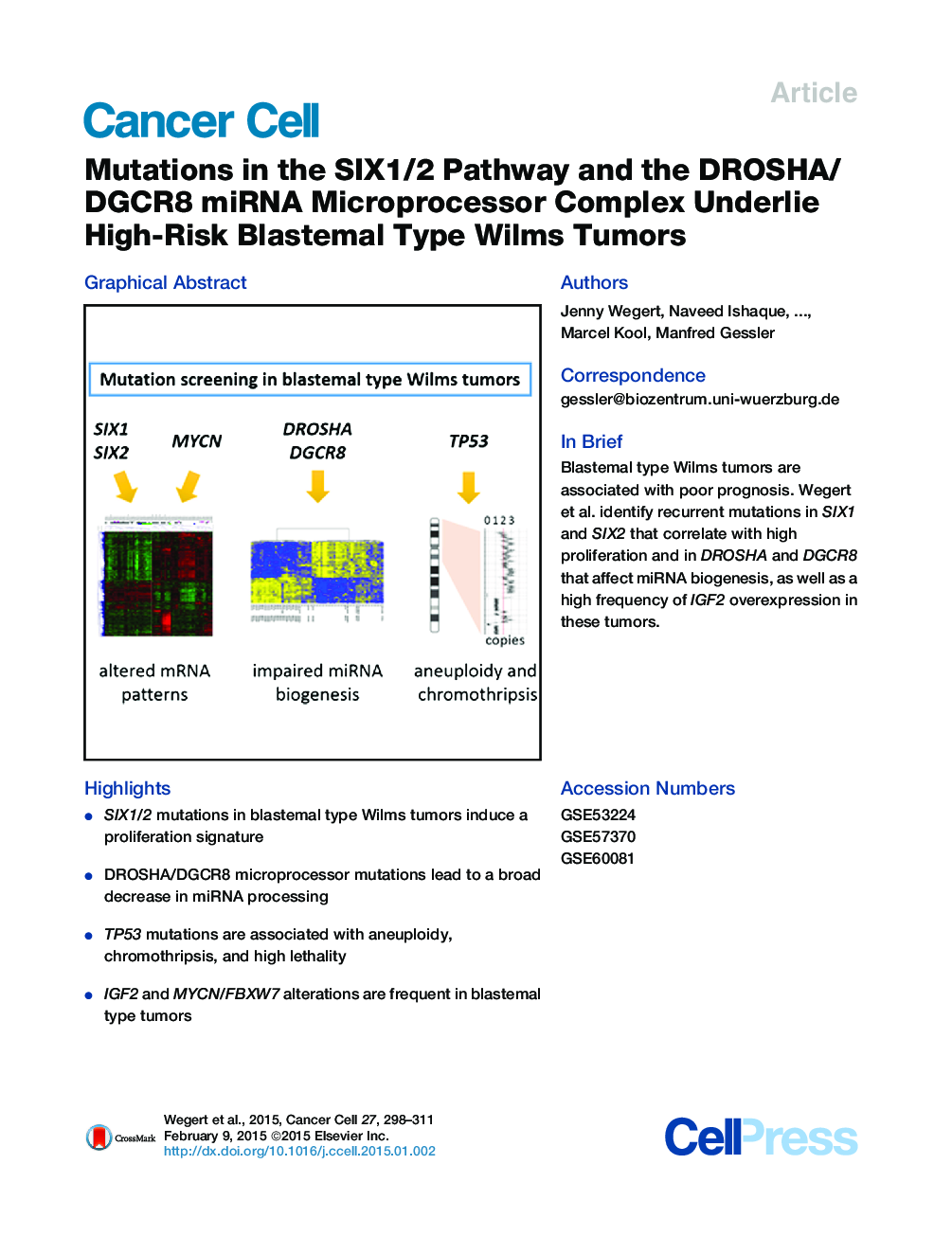| کد مقاله | کد نشریه | سال انتشار | مقاله انگلیسی | نسخه تمام متن |
|---|---|---|---|---|
| 2106802 | 1083629 | 2015 | 14 صفحه PDF | دانلود رایگان |

• SIX1/2 mutations in blastemal type Wilms tumors induce a proliferation signature
• DROSHA/DGCR8 microprocessor mutations lead to a broad decrease in miRNA processing
• TP53 mutations are associated with aneuploidy, chromothripsis, and high lethality
• IGF2 and MYCN/FBXW7 alterations are frequent in blastemal type tumors
SummaryBlastemal histology in chemotherapy-treated pediatric Wilms tumors (nephroblastoma) is associated with adverse prognosis. To uncover the underlying tumor biology and find therapeutic leads for this subgroup, we analyzed 58 blastemal type Wilms tumors by exome and transcriptome sequencing and validated our findings in a large replication cohort. Recurrent mutations included a hotspot mutation (Q177R) in the homeo-domain of SIX1 and SIX2 in tumors with high proliferative potential (18.1% of blastemal cases); mutations in the DROSHA/DGCR8 microprocessor genes (18.2% of blastemal cases); mutations in DICER1 and DIS3L2; and alterations in IGF2, MYCN, and TP53, the latter being strongly associated with dismal outcome. DROSHA and DGCR8 mutations strongly altered miRNA expression patterns in tumors, which was functionally validated in cell lines expressing mutant DROSHA.
Graphical AbstractFigure optionsDownload high-quality image (317 K)Download as PowerPoint slide
Journal: - Volume 27, Issue 2, 9 February 2015, Pages 298–311